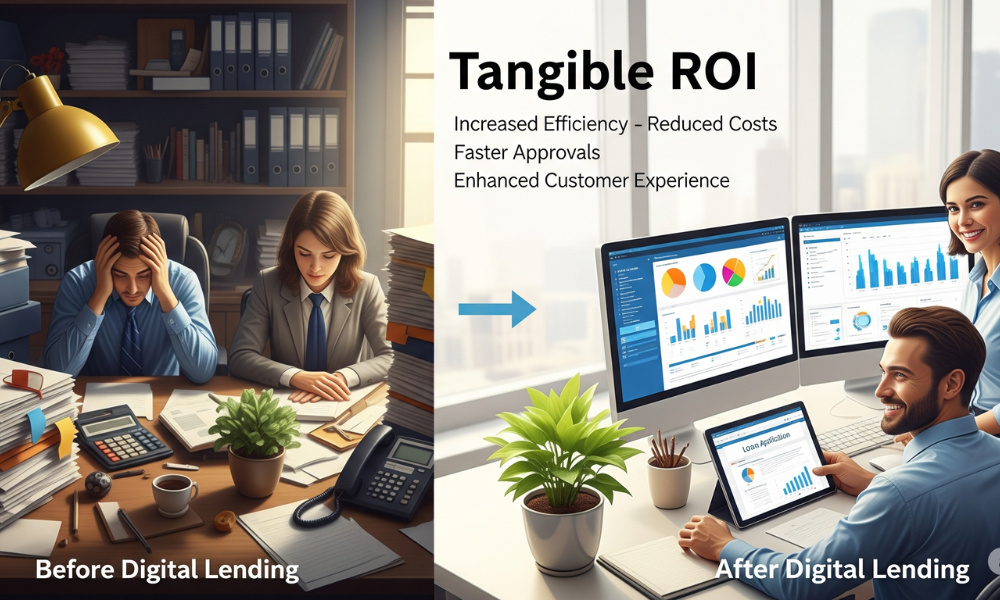
Continuing with outdated loan systems increases operational costs, slows approval times, and introduces compliance vulnerabilities. This article outlines the tangible costs of deferring an upgrade to a modern digital loan management software and the return on investment it can deliver.
Why Waiting Costs More: The Financial Impact of Delaying Digital Loan Management
In the context of financial services, maintaining the status quo with legacy systems is often perceived as a prudent, risk-averse strategy. However, when applied to loan management, this perspective is frequently misguided. Deferring the implementation of a modern digital loan management software is not a cost-neutral decision. It is an active choice that carries compounding financial burdens, operational inefficiencies, and strategic disadvantages that accrue with each fiscal quarter.
The expectation among borrowers for rapid, seamless digital experiences has become the industry standard. Institutions that rely on manual processes and fragmented software architectures are fundamentally ill-equipped to meet this demand. This analysis will detail the specific costs associated with delaying this critical technological upgrade and demonstrate the substantial return on investment that a modern system provides.
The Compounding Costs of Operational Inertia
Postponing the adoption of new technology does not eliminate its associated costs; it merely defers and often magnifies them. The “cost of delay” is a function of both quantifiable operational waste and less tangible, but equally critical, strategic and competitive impairments.
Escalating Operational Inefficiencies
The most direct consequence of retaining an outdated system is the persistent drain on operational resources. The risks inherent in manual loan processing extend beyond simple clerical errors to encompass systemic inefficiencies that impact the entire lending lifecycle.
- Excessive Manual Intervention: A significant portion of an employee’s time can be consumed by repetitive, low-value tasks, including manual data entry, document verification, and inter-departmental follow-ups. A contemporary system can automate loan processing, which allows skilled personnel to allocate their expertise to more complex functions such as sophisticated credit analysis and client relationship management.
- Elevated Error Rates: Manual processes are inherently susceptible to human error, which can result in inaccurate financial calculations, compliance oversights, and suboptimal lending decisions. The process of identifying and rectifying these errors introduces considerable delays and rework into the loan workflow.
- Extended Turnaround Times (TAT): The impact of a slow loan approval process is significant. When each stage of the lending process requires manual handling, the overall turnaround time increases substantially. This not only leads to borrower dissatisfaction but also imposes a ceiling on the loan volume that an institution can manage, thereby constraining its potential for growth.
Demonstrable Revenue Leakage and Missed Opportunities
An inefficient and protracted loan process does not merely inconvenience prospective borrowers—it actively directs them to competing institutions. The revenue loss attributable to loan delays is a concrete and measurable metric.
- High Rates of Borrower Attrition: Today’s loan applicants exhibit limited tolerance for protracted processes. If an application requires several days for a decision that a competitor can provide in minutes, the applicant is likely to be lost. This borrower attrition due to delays frequently occurs late in the application process, meaning the institution has incurred acquisition costs with no corresponding revenue.
- Deterioration of Brand Reputation: A corporate reputation for being slow and administratively burdensome can deter future applicants, leading to a gradual erosion of the institution’s market position.
- Inhibited Product Innovation: The financial marketplace is characterized by the continuous introduction of novel credit products. A rigid, legacy system significantly impedes an institution’s ability to develop and launch new offerings in a timely manner, relegating it to an outdated product portfolio while more agile competitors capitalize on emerging market segments.

Increased Compliance and Security Exposures
The regulatory framework governing financial services is subject to continuous evolution. An antiquated system severely limits an institution’s capacity to adapt to these changes, thereby exposing it to considerable risk and compliance challenges in digital lending.
- Audit and Regulatory Deficiencies: Modern platforms incorporate lending compliance automation, which establishes clear, auditable trails and helps ensure adherence to current regulatory mandates. A manual system presents considerable challenges during audits, complicates the process of demonstrating compliance, and increases the potential for significant regulatory penalties.
- Data Security Weaknesses: Older software architectures often lack the sophisticated security protocols of contemporary, cloud-native platforms. This can leave sensitive client data vulnerable to unauthorized access and security breaches, the financial and reputational consequences of which can be severe.
Realizing Value: The Tangible ROI of a Modern Digital Lending Platform
The implementation of a new system should not be viewed as a capital expenditure but as an investment with a clear and measurable return. The ROI of a digital lending platform is comprehensive, generating benefits that extend across all facets of the organization.

Optimizing Efficiency and Reducing Operational Expenditures
The most prominent benefit is a significant reduction in operational costs associated with lending. By implementing a unified, end-to-end digital lending suite, an institution can achieve the following:
- Accelerated Turnaround Times through Automation: Institutions frequently report substantial reductions in loan approval times, in some cases from several days to a matter of minutes. This enhanced efficiency allows for a greater volume of loans to be processed with the existing staff.
- Automated Underwriting Processes: The use of sophisticated algorithms for automated underwriting in lending enables faster, more consistent, and more precise credit assessments.
- Integrated Workflow Solutions: Modern loan management software integrates with a variety of external applications, including major credit bureaus, KYC verification services, and banking APIs, providing a holistic view of customer data.
Strengthening Risk Management and Improving Decision Quality
A contemporary platform serves as a critical tool for mitigating credit risk. With features such as early delinquency detection and real-time credit checks, an institution can transition from a reactive to a proactive risk management posture.
- Enhanced Credit Assessment: Advanced analytical models can evaluate numerous data points to assess creditworthiness with greater accuracy than traditional methods, facilitating more informed lending decisions.
- Proactive Risk Alerts: The system can be configured to automatically identify and flag accounts exhibiting early indicators of financial distress, enabling collections teams to intervene before an account deteriorates into a non-performing asset.
Delivering a Superior Borrower Experience
Finally, providing a seamless, transparent, and efficient digital experience is now a fundamental expectation for borrowers. A modern platform fosters trust and loyalty, which can convert one-time transactions into long-term client relationships.
Conclusion: The Imperative to Act
The evidence indicates that deferring an upgrade to a modern loan management system is a financially unsound decision. Each day of delay represents a tacit acceptance of elevated operational expenses, increased compliance risks, and a continuous loss of market share to more technologically advanced competitors. The cost of inaction significantly outweighs the investment required for a new system.
The pertinent question is no longer whether to upgrade, but rather how expeditiously an institution can begin to realize the associated benefits.
To learn how our digital loan management software can deliver a substantial return on investment for your institution, please contact us to schedule a complimentary demonstration.



